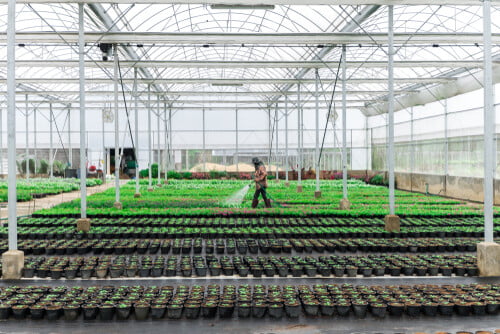Marijuana has become much more popular in recent years. Over the past year, polls from centers like Gallup have found that support for legalizing it has increased to 64%. It was only 12% in 1969, at the height of the hippie movement. However, efforts to legalize marijuana have raised significant questions about a variety of related topics, including environmentalism. Making cannabis production more sustainable is an important topic to consider.
The environmental impact of cannabis regulation is something that cannot be overlooked. A recent study published in Science Direct show that cannabis use can profoundly hurt the environment. The study from Ithaca College highlights the need to develop controls to stop harmful environmental practices related to marijuana farming. But would this be good business?
Marijuana Legalization Discussions Omit Environmental Impact Questions
As a jurisdiction moves from full cannabis prohibition to limited medicinal use to recreational cannabis use, there tends to be much public discourse. Arguments are made for and against changes in the status of cannabis, some rooted in science, others in political or philosophical positions.
One of the less mentioned, but substantial, benefits of state regulation is cleaner cannabis. Cleaner cannabis is not about purity, but environmental cleanliness in production. This is an issue that more people need to focus on.
To briefly recap first principles, in order for a plant to grow, it requires some degree of light, usually from the sun, to undertake photosynthesis which is the creation of sugars that help the plant grow.
People who successfully grow cannabis illegally are smart enough to realize that growing outdoors makes it too easy for the DEA to find. So instead, they grow indoors, in basements or warehouses with little to no natural light. Upcoming Canadian regulations will require people growing plants keep them from public view, which in most cases means indoor growth.
The benefits of sunshine for plants are that it’s abundant and free. The drawback of indoor growing is sunshine mostly stays outdoors.
Replacing the natural energy source of the sun requires extensive use of grow lights and equipment powered by the electricity grid. It also requires, in order to avoid detection through over consumption, that growth operations be small, discreet, and inefficient affairs.
Instead of a field of sun-drenched cannabis, you have thirty small wasteful basement operations, powered by the energy grid, that have a tremendous carbon footprint. In the US, 1% of energy usage goes on indoor cannabis growing and for every kilogram produced, 4,600 kg of carbon is released into the atmosphere. Indoor cannabis production in California accounts for 3% of their annual energy usage, more than is produced by the Hoover dam each year.
Regulatory requirements and the hangover of illegal growth mentality means legal farming is simply scaling the indoor growth approach of recreational cannabis. While scale eradicates some inefficiencies, it remains a tremendous (and expensive) draw on the grid, producing a substantial carbon footprint. Finding clean ways of growing cannabis that allow cannabis companies to reduce overheads and increase profits should be a key focus for cannabis investment.
Lifestyle companies like Green Growth Brands pride themselves on being a green, environmentally friendly cannabis company. In order to connect with customers that value natural and environmental qualities, they have to be transparent in how their cannabis is grown and it’s passage from seed to harvest to product to shelf.
Cannabis production needs to shed itself of its secretive old practices. While regulations might prevent public view, this does not mean that cannabis needs to be grown in a basement. The road to cleaner cannabis is the road to an environmentally pure, greener, product for consumers and improved profits for producers and a more profitable cannabis investment.
Marijuana Regulations Can’t Overlook Environmental Issues
Environmental issues can’t be isolated from other important policy discussions. Marijuana is no exception. The same people that strongly support marijuana legalization are typically concerned with promoting environmental sustainability. However, the focus on protecting the environment is often not done in tandem with marijuana discussions. This imperils the future of the environment, because traditional marijuana farming and processing practices can have a baneful impact on the environment.
The good news is that there are lots of clean practices that can be used to promote marijuana. They just need to be handled carefully. Policymakers will need to consider the implications of the environment while adapting marijuana legalization and make sure the right regulations are set in place.































